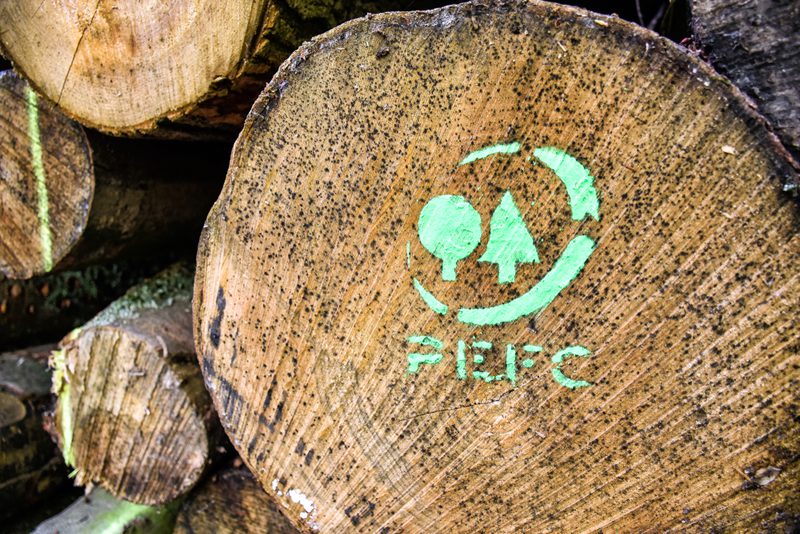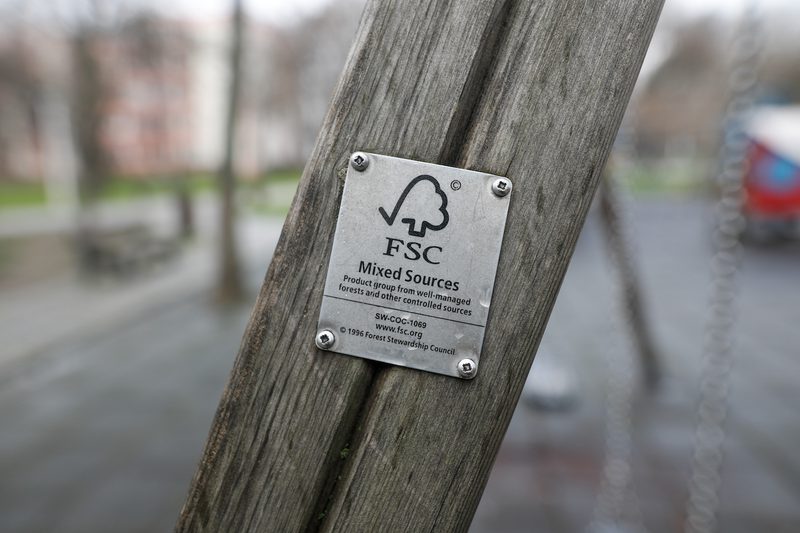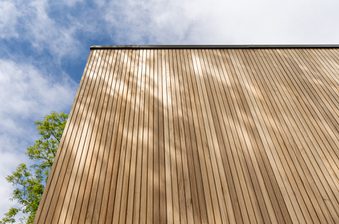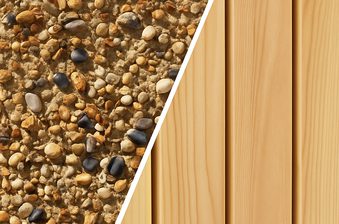Ensuring products are of sustainable origin is a huge concern for those in the timber supply chain.
The demand for environmentally-responsible building materials grew rapidly in the 1990s from homeowners, architects, developers and contractors. With this came the need to be able to prove the sustainability of wood.
There are many wood certification systems, but PEFC and FSC are by far the two most popular, carrying very recognisable quality marks.
They share the common aim of certifying that wood is from a responsibly-managed source, helping consumers to make sustainable choices as well as instilling trust and confidence in timber products.
PEFC
Programme for the Endorsement of Forest Certification (PEFC) is a global non-profit organisation. Its aim is to promote sustainable forest management through independent third-party certification.
PEFC is the largest certification system in the wood: it covers more than 280 million hectares of forest. It was founded in 1999 and is based in Geneva, Switzerland.
Wood carrying the ‘green trees’ PEFC logo comes from a certified forest that is managed in line with a number of environmental, social and economic requirements. The criteria are based on internationally accepted conventions and guidelines. The provenance of products must be completely traceable throughout the entire supply chain, from forest to end use.
Choosing to be certified is entirely voluntary and market-based. Inspections are carried out by accredited, independent companies.
PEFC has many types of members: these can be national systems, non-governmental organisations (NGOs), labour unions, businesses, forest management organisations and individuals.

Endorsing national systems
The PEFC works by endorsing the national certification systems of individual countries to ensure they meet certain sustainability benchmarks. These were set at the Ministerial Conferences for the Protection of Forests in Europe in Helsinki (1993) and Lisbon (1998).
To become a PEFC-endorsed standard, a country’s national forest certification scheme must be reviewed by an expert panel and the PEFC board against international criteria. The certificate is then awarded by a third party. There are currently 55 national members; these are independent organisations that develop and run the forest certification system in their own country.
These national certification systems are developed by a multistakeholder process; this way, according to the PEFC, the schemes are tailored to local priorities and conditions. In this way, PEFC claims that they give forest managers — large and small — the tools to demonstrate their excellence in sustainability and responsibility.
FSC
Forest Stewardship Council (FSC) is a global non-profit organisation and certification scheme promoting sustainably-managed woodland.
The organisation was founded in 1994. Its focus was initially on tropical woodlands where illegal, unsustainable harvesting was a concern. These days, it applies to all types of forests: tropical, temperate and boreal. FSC’s certification system is recognised in over 80 countries, covering 180 million hectares.
FSC has two certification standards: one is aimed at forest management companies. This aims to ensure that they are managed according to certain environmental, social and economic standards — their 10 principles.
The other is chain of custody certification, which emphasises supply chain integrity. This verifies that FSC-certified wood remains separate from uncontrolled material throughout its journey to consumers. Any company processing FSC timber must also be FSC certified.
Over 77% of people in the UK recognise the FSC’s ‘tree tick’ logo. It signifies that wood comes from an ‘environmentally appropriate’, ‘socially beneficial’ and ‘economically viable’ source.

Like with PEFC, it is a voluntary process for identifying sustainable forests and is carried out at the request of a forest owner or manager by independent companies.
‘Cultivating change through collaboration’
The FSC aims to bring together diverse groups of people, balancing everyone’s interests to achieve a mutually-beneficial outcome — a ‘multi-stakeholder’ platform for all involved in the timber supply chain. It has an environmental, social and economic chamber:
- Environmental chamber: NGOs, research groups, environmental activists.
- Economic chamber: Forest managers and stewards, timber retailers.
- Social chamber: Indigenous communities, labour unions.
FSC’s aims are to support:
- Zero deforestation
- Safeguarding ancient and endangered forests
- Fair wage and work environments
- Preserving biodiversity
- Community rights, including of indigenous people
So, what are the actual differences between PEFC and FSC?
PEFC and FSC share an identical aim: sustainable forestry. Both emphasise chain of custody — tracking of raw materials from certified forests through every stage of the supply chain. They are the gold standard for wood certification and are very similar quality markers; both meet the UK government’s requirement for sustainable timber.
However, they do have a few distinct differences.
- ‘Bottom up’ vs ‘top down’: PEFC is a mutual recognition scheme, assessing a country’s forestry management systems. Forests are inspected locally against international criteria for sustainability — ‘bottom up’. FSC is an agency that establishes a global standard for forest management which can be adopted nationally. Forests must meet these certain standards — in this way, the FSC is ‘top down’.
- Third vs. second-party: PEFC certificates are interpreted and issued by a third-party independent body; FSC awards the certification themselves.
- Origins: FSC was originally focused on preventing illegal logging in tropical environments. The PEFC, founded around five years later, built on top of this in response to demand for certification of wood from temperate regions like North America and Europe.
- Size: PEFC woodland covers 280 million hectares; FSC-certified woodland covers 180 million hectares. PEFC has 55 national members, whereas the FSC has certified forests in over 80 countries.
Does certified sustainable timber cost more?
It can. To maintain the chain of custody, PEFC and FSC certification can incur costs along the supply chain — audits, paperwork and admin all add expense. These costs can be passed on to customers and reflected in the price of the wood. The extent to which this is the case differs from product to product, but expect to potentially pay a 10–20% premium.
Starting a sustainable timber project?
All of our sawn timber, cladding, fencing and decking is available with PEFC and/or FSC certification on request.
Even products not carrying this certification are only sourced from sustainably-managed woodland — you can take a look at our environmental policy for more information.
To begin your project, get in touch today using the button below.







